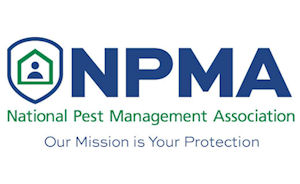 The National Pest Management Association (NPMA) has surveyed American adults about their knowledge of mosquito diseases in the U.S. and bite prevention practices.
The National Pest Management Association (NPMA) has surveyed American adults about their knowledge of mosquito diseases in the U.S. and bite prevention practices.
“Our survey found that although many Americans are aware of the prevalence of West Nile virus (WNV) in our country, less than 10 percent are aware of two other mosquito-borne diseases, dengue and chikungunya, which are found in the U.S.,” says Cindy Mannes, vice president of public affairs for NPMA. “And despite their general awareness of mosquito-transmitted disease, only about half of the population uses mosquito repellent, and even fewer implement other crucial prevention methods.”
Although WNV is the most common mosquito-borne disease transmitted in the U.S., there are several others transmitted within the country and/or diagnosed in travelers who become infected while abroad. The threat of new viruses being brought in and transmitted in the country is real, as evidenced last year when the U.S. Centers for Disease Control and Prevention (CDC) recorded the first-ever cases of mosquitoes spreading chikungunya within the continental U.S.
When asked about mosquito-borne diseases, 78 percent of Americans are aware that WNV is found in the U.S., while only 9 percent each say that chikungunya and dengue are found in the U.S.
According to the CDC, as of Aug. 4, 2015, there have been 90 reported human cases of WNV and three fatal cases reported in Arizona, California and Texas, a number that is expected to climb through the season. There were more than 2,000 human cases reported to the CDC’s ArboNET in both 2013 and 2014, and since 2009 there have been more than 41,000 human cases reported and 1,765 deaths.
The CDC also reports a total of 265 chikungunya virus disease cases from 36 U.S. states, with all reported cases occurring in travelers returning from affected areas. In 2014, there were several locally transmitted cases in Florida. According to the CDC, most dengue cases in the U.S. occur among residents of Puerto Rico, the U.S. Virgin Islands, Samoa and Guam.
When it comes to prevention techniques, the NPMA found the following in its survey:
- 59 percent of Americans use mosquito repellent to protect themselves and family members from mosquitoes
- 42 percent install screens on windows and doors
- 41 percent remove and clean up areas of standing water around properties
- 23 percent avoid extended periods of time outdoors
- women (36 percent) are more likely than men (26 percent) to avoid going out during peak mosquito hours of dusk and dawn
Survey methodology
This survey was conducted online within the United States by Harris Poll on behalf of the NPMA from July 22-24, 2015, among 2,024 adults, ages 18 and older. This online survey is not based on a probability sample, and therefore no estimate of theoretical sampling error can be calculated.
Leave A Comment